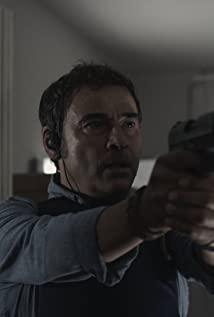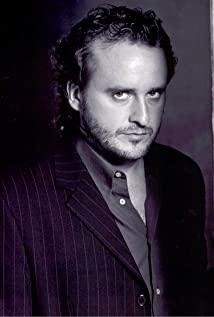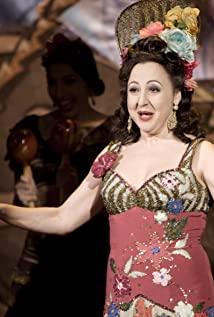Original: Cahiers du Cinéma July-August 2011 N°669 Interviewer: Yi Isabelle Zribi
Translator: Cancan Huang (France)
Translated article published on the cinephilia website: http://cinephilia.net/archives/9555
1. How did you adapt from Thierry Rongue Jonquet's novel Mygale, conceived the structure of the film?
"When I adapt a novel, I only read it once or twice, no more, because the adaptation requires freedom. As for the film, I did not copy the structure of the original novel, but designed a It's my own way of telling the story. The narrative of the novel is constantly alternating between the mysterious present tense and the insertion of some past fragments, but we don't quite know what those past fragments correspond to. The most interesting in this book is What I am interested in: the doctor's revenge, I want to deepen it and make it more believable.
I am telling a fairy tale: "Once upon a time there was a story in the ancient city of Doretto, in a country house... That's how the film begins: first a panoramic shot of the city of Doretto, and then there's a house in the city, and there's a woman by the window in the house, and she's making some mysterious poses: she's doing yoga. Then we see another woman putting the prepared breakfast into the elevator. The third character is Robert Ledgard (Antonio Banderas), the surgeon. The prisoner, the woman who cooks, Doctor, the relationship between the three characters seems to have no tension from the beginning, and the audience will be surprised by that. At least I imagine it will. The conspiracy begins with this lack of tension: that's my claim to the beginning.
In the Tiger Man passage, the narrative takes a turn as the doctor has to make a choice about the prisoner's situation. This choice also clarifies the fate of other characters. So far, it's a linear narrative, but when the doctor spends the first night with the captive Vera (Elena Anaya), they sleep head to head, and their thoughts seem to pass each other, so we flash back to Once upon a time, take a look at how the characters got here. The narrative is divided into two parts, his and her separate memories. After the audience has a glimpse of what happened to people, the narrative returns to the main line. This turning point happens in the middle of the film, and it feels like it's cut into two pieces. 2. In the
narrative, there are three elements: revenge, the possibility of a love story, a dead woman attached to the memory of another character being reborn. But the three are not treated equally, rather you compose a It 's a delicate imbalance.
"The revenge plot was where I started this script, and it was like a surgeon's pretext. And in my story, revenge doesn't really mean anything, because the rape doesn't actually happen. But for Dr. Robert, rape was used to demonstrate the existence of social scrutiny and a trial of rights. The real theme of the film is not revenge, but the abuse of power. Just as there is no rape at all in the film, the surgeon's crimes against young men are unjust. That's exactly what some countries and governments do, making up a whole bunch of excuses for committing violent crimes. Research on skin regeneration is far more important to a doctor than revenge, and in his view it makes perfect sense to destroy another person's life for research purposes. But he gave the prisoner the face of his beloved deceased wife. That's when I had an opportunity to join a flashback about his love for his wife. But I prefer to just present a way of recalling the past through his eyes and expressions. Eventually all the stories about his ex-wife, his family disappeared. In front of him is the face of a new creation, not a continuation of his dead wife's life, but a person who originally had his own life, but was destroyed and reshaped by him.
The scene in the film that conveys this message is when the doctor sees the tiger man raping Vera. He remembered that his ex-wife had had a relationship with this man, and at this time he wanted to kill them both together. But when he entered the room, he first aimed the gun at Vera, then he hesitated, and finally changed his mind and chose to kill the tiger man alone.
At this moment, he fell in love with this new creation, the woman who begged him with her eyes: "Don't kill me, let me live, I will give everything you want." The new object of his desire is Vera. The sanity for vengeance is gone, and so is the ex-wife, and this new love story takes their place. The most important thing for me is that all the past in the film is for expression, all the way the doctor travels is to get him here, to fall in love with his creation. This unexpected love makes him kind, even as easy to manipulate as a child. At the end of the film, the real survivor Vera returns to her homeland. She has a beautiful skin that does not belong to her, but she has changed back to Vicente. What I want to express is that science is not an entrance, and the continuation of the self-identity of the soul and existence cannot be manipulated by anything. 3. Regarding
the transition itself, we can imagine the David Cronenberg-style transplant process, with burnt skin, scars, muscles, etc. But Elena Anaya's skin is smooth and beautiful. Stitches and scar wounds The idea of is only manifested externally, through costumes and masks. There is staggering violence against organs in the film, but everything is clinically clean and calm.
"When I was thinking about the style of the film, I was hesitant to black and white. Between the silent film and the neutral, decorative styles that are now in the film. I don't want to do a bloody movie. Hope to use as little blood as possible to express the scene. We only saw scars on the second-skin-equivalent outer garment, which was made by designer Jean Paul Gaultier. In one scene, the surgeon draws lines on the mannequin, as if drawing a map, with areas like the different provinces of a country. We also saw scars on her upper body. But I don't want to show anatomy, even though it's really a violent movie for me. The real rape was the violent, persistent rape, the cruelest punishment, that Wisant had endured. However, I still wanted to do it in a neutral way: I asked my actors to be unadorned, I wanted a decorative set, but no horror stage lighting, I chose to use a palette that was darker than the usual colors plate. 4. Did
you really ever want to make a black and white silent film?
"Yes, my desire is to make a film that pays homage to my beloved Fritz Lang, or FW Murnau, with strong chiaroscuro and paragraphs. But I'm quick I just dropped the idea, my main cinematic reference is Les Yeux sans visage (Les Yeux sans visage) by Georges Franju, a non-horrifying, lyrical Movies."
5. How do you use this reference in your movies?
"I watch this movie a lot. Inevitably, it affects me when I write the script. There is a parallel theory here: especially between the character Vera and the character played by Alida Valli. There is also a connection between the use of animal skin to reshape the skin of the disfigured heroine in "Eyes without a Face", and the two acts of Dr. Robert taking blood samples from pigs for information in this film. There are also Some commonalities in the images and images, like some momentary scenes, some characters who will come to the set to see our shooting: the legend of Frankenstein, "Prometheus Bound", Hitchcock's "Vertigo" and "Butterfly Dream," as if the character played by Judith Anderson was transferred to the character played by Marisa Paredes. These references are like haunting ghosts On set .”
6. In the scene where Vera tries to escape, she wears a black jumpsuit and white mask, reminiscent of Georges Franju more than Louis Feuillade ), and Vera looks like a little boy, just as a man must go back to being a child to become a woman.
"Yeah, I asked Elena to act like a boy in this scene, it was the only transition scene. I asked her to run like a tomboy, and I shot her from overhead, it really felt like she was naughty child."
7. In almost all of your films, art forms act directly on the narrative: songs, paintings, choreography, images, etc. But what interests you most is not the art forms themselves, but the visual effects they display. You often shoot irrational or passionate characters against them. In this film, the doctor's ex-wife dies culturally while singing, or Vera adjusts to her transgender identity by relying on the work of Louise Bourgeois.
“Indeed, the appearance of my films is important, but ultimately it is the characters that express it. What I love most about art is the sense of history it carries, not the appearance of documents. For example, in my film Talk to Her , two men perform Pina Bausch's Cafe Muller, which helped me express the theme of the film. In it, we can see two men in white dresses Blind women, walking blindly in a cafe full of tables and chairs, men hurriedly pick them up so they don't bump into themselves. I used this dance to show two women in a subliminal way How deep is the world of deep coma. At the same time I showed the emotions of two men, one crying and the other not, when they both returned to the hospital, the man who didn't cry was amazed by the other man's cry, but when he listened to When it comes to Caetano Veloso's singing, we can't help but wonder. We wonder why, and we will only understand when we rethink old love stories
. , the work of Louise Bourgeois is very crucial and it allows Vera to survive. I really like the work of this plastic artist, who shows the coexistence of androgyny in many of her works. It is often seen in her sculptures Reproductive organs of both genders. There are also works showing women in prison, one of them showing her legs, but the upper body is a house. Vera also painted this work on the wall. And Vera made it out of her own clothes The passages of the doll touched me very much. The sewing marks of the doll are very heavy, like the scars she sewed by herself. In fact, I want to use these works: the first is to show the effect that she is also creating a person, and the second is to use these works. It's about breathing new life into a story. Likewise, some songs, film scenes and stage plays have a telling role in my story."
8. What about movies within movies?
"I wanted to incorporate it more dramatically into the film as a whole. For example, I used dub twice, in Woman on the Brink and Broken Embrace. I hate dub, but I used it to express The situation of the characters. A woman in "Woman on the Brink" for Sterling Hayden and Joan Crawford's love scene in "Johnny Guitar" Dubbing. The man she loved couldn't voice Sterling Hayden, so she did the dialogue by herself, and it was the most beautiful story in the movie, she couldn't hear the "te" she expected from a man quiero" (I love you), she can only hear Sterling Hayden saying "I love you" in her headphones. This scene expresses the character's lonely situation. In "Broken Embrace", in the husband I also used dubbing when watching the behind-the-scenes footage of his wife's movie. He was looking for someone to film his wife in order to monitor her whereabouts, but it backfired when he watched Penelope Cruz in the film and said: " Let it go, I'm leaving you and you'll never see me again" she herself was saying the same thing to him at the door. The dub added a second scene to the same passage, and the man was dumped twice."
View more about The Skin I Live In reviews











